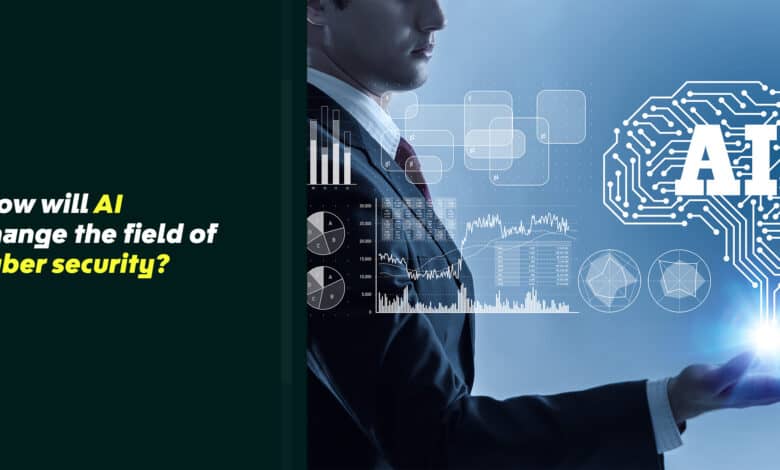
The world is turning digital at an unprecedented rate, and the transition will only accelerate. Everything – business, entertainment, trends, new goods, and so on – is moving at breakneck speed as a result of digitalization. Because the service provider has the capacity to provide, the customer receives what he or she wants right away. (Field of cybersecurity)
While the advantages and benefits of the digital age are numerous, it also has some drawbacks. One of the most serious and damaging risks it poses is that our personal information is now more vulnerable than ever. Hundreds of incidents of identity theft, money loss, and data breaches have occurred in the previous decade or so. Cyberattacks are ubiquitous in nature, affecting everyone from individuals to businesses to government agencies. We’re approaching a period where hackers may reach their targets from anywhere in the globe at any time, therefore cybersecurity is more important than ever.
A typical cyber-attack involves adversaries or cybercriminals attempting to gain unauthorized access to, change, or destroy a target’s computer system or network. It is the systematic, planned, and deliberate use of technology to disrupt computer networks and systems to disrupt organizations and processes that rely on them. Network security engineers have to be on constant watch to take care of such things.
Is Machine Learning and Artificial Intelligence A Threat To Cybersecurity?
The possibility of terrorists weaponizing Artificial Intelligence and utilizing it to accelerate and spread their attacks is a serious concern, given its very tremendous potential. One of the most serious worries is that hackers may utilize AI to automate large-scale cyberattacks. Human resources are now being used by our opponents to plan and coordinate their assaults. If and when they learn to utilize AI and machine learning to perform the dirty work, the landscape of cybercrime and cybersecurity will alter — and not for the better.
Another important concern is that, just as we can utilize AI and machine learning to supplement our human resource shortages and reduce cybersecurity costs, our enemies can do the same. The funds and resources required to launch and coordinate such assaults will plummet, posing a greater danger to cybersecurity at a lower cost to the cyber attacker.
Artificial intelligence advancements may potentially give rise to new forms of cyber-threats. AI can also exploit a system’s flaws far faster and more effectively than a human can.
Artificial Intelligence’s three primary implications for the dangerous environment are the augmentation of today’s threats and assaults, the generation of new threats, and the modification of the character of current threats.
What Are the Benefits of Artificial Intelligence in Cybersecurity?
While the future appears grim, technological advancements have had important implications for cybersecurity. Tools and approaches created and backed by Artificial Intelligence (AI) and Machine Learning (ML). As a subset of it are one such big game-changer in the realm of cybersecurity.
Artificial intelligence is no longer just a term; it is already widely employed in a variety of sectors. Customer service, education, automation, and other fields are just a few of the areas where AI has accelerated progress. It also plays an important part in the continuing battle against cybercrime.
The following are some of the ways that Artificial Intelligence (AI) and Machine Learning (ML) are helping to improve cybersecurity.
Cyber Threat Detection Using Machine Learning
To defeat whatever the attackers are trying to achieve, organizations must be able to identify a cyber-attack in advance. Machine learning is a branch of Artificial Intelligence that has shown to be highly effective in detecting cyber threats based on data analysis and recognizing a danger before it exploits a weakness in your information systems.
Machine Learning allows computers to utilize and adjust algorithms based on the data they get, learning from it and recognizing the improvements that are necessary as a result. In the context of cybersecurity, this means that machine learning allows a computer to forecast risks and detect abnormalities far more accurately than a person can.
Traditional technology is overly reliant on historical data and is unable to improvise in the same manner that AI can. Traditional technology can’t keep up with hackers’ new methods and tactics like AI can. Furthermore, the number of cyber dangers. What individuals are exposed to daily is too much for humans to handle and is best handled by AI.
Authentication, Password Protection, and AI
When it comes to security, passwords have always been an extremely flimsy control. They’re also frequently the only line of defense between hackers and our accounts. Biometric authentication has been tried as a password replacement. However, it is inconvenient and vulnerable to hacking. For example, when a facial recognition system doesn’t recognize you because of a new hairdo or because you’re wearing a hat, it might be aggravating to use. Attackers can also get around it by utilizing your Facebook or Instagram photos.
Developers use AI to improve biometric authentication and eliminate flaws to make it a more trustworthy system. One example is Apple’s facial recognition technology. Face ID is a system that uses built-in infrared sensors and neural engines to process the user’s facial characteristics. By recognizing important connections and patterns, the AI program develops a comprehensive model of the user’s face.
Phishing Detection And Prevention Using AI-ML
Phishing is one of the most frequent cyber-attack tactics. In which hackers aim to deliver their payload via a phishing assault. Phishing emails are quite common; one out of every 99 emails contains a phishing attempt. Fortunately, AI-ML has the potential to help prevent and discourage phishing assaults.
More than 10,000 active phishing sources can be detected and tracked by AI-ML. Which can respond and remediate considerably faster than humans. Furthermore, AI-ML scans phishing threats from all over the world. And its knowledge of phishing efforts is not limited to any one geographical region. Artificial intelligence has made it possible to rapidly distinguish between a phony and a real website.
Wrapping up
Adversaries are improving their hacking methods, tools, and approaches to exploit individuals and organizations as technology advances. Artificial Intelligence is undeniably beneficial, but it is also a double-edged sword. We will be able to see how far we can push this technology to be both a benefit and a scourge to cybersecurity. And society as a whole. Getting network security engineer training is a sure-shot way of making yourself more marketable in the job-hunting field.






One Comment